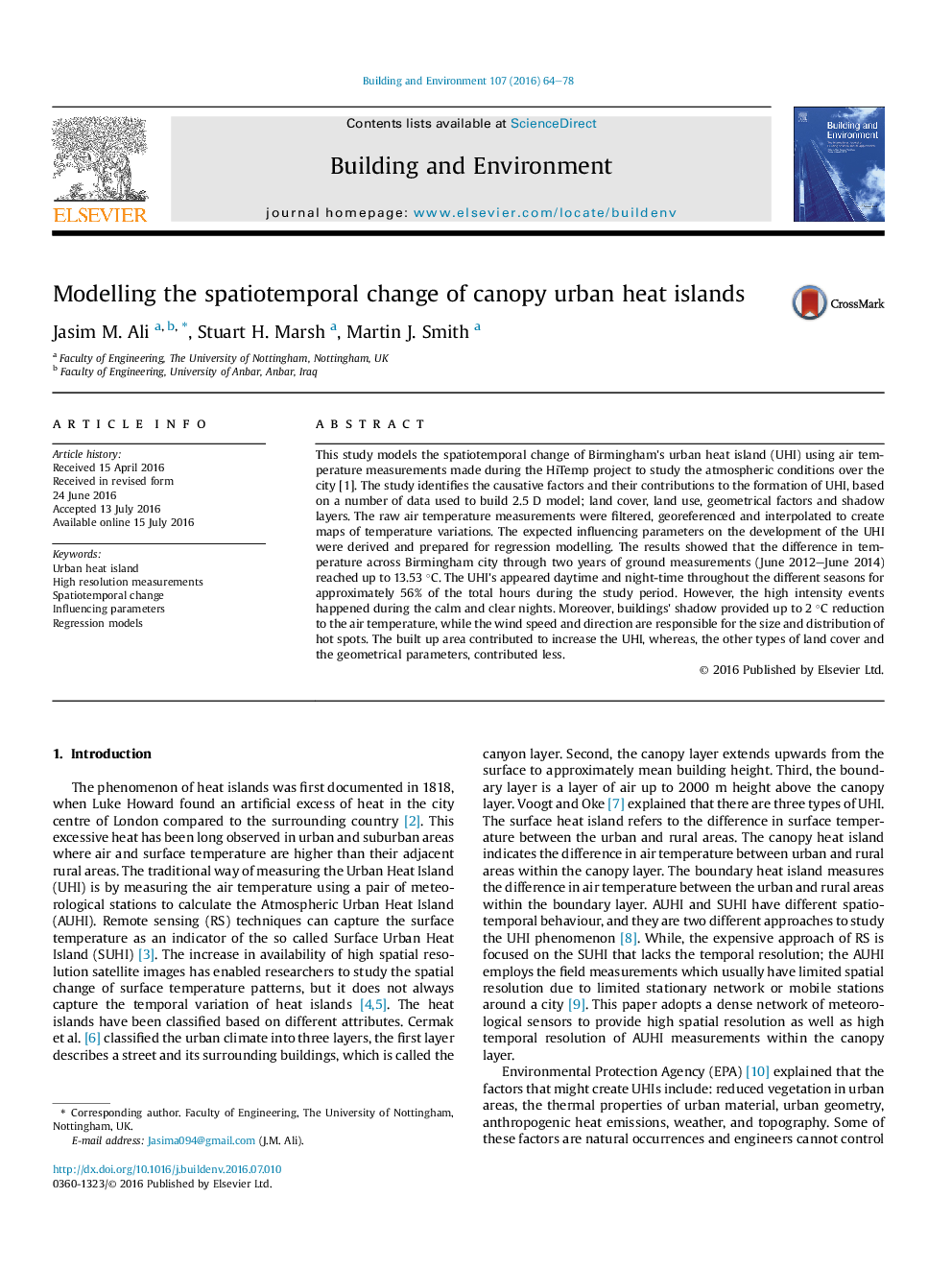| کد مقاله | کد نشریه | سال انتشار | مقاله انگلیسی | نسخه تمام متن |
|---|---|---|---|---|
| 247709 | 502516 | 2016 | 15 صفحه PDF | دانلود رایگان |
• Models the spatiotemporal change of Birmingham's UHI and influencing parameters.
• UHI's appeared 56% of the total hours day and night throughout two year measurements.
• Buildings' shadow provided up to 2 °C reduction to the air temperature.
• Wind speed and direction are responsible for the size and distribution of hot spots.
• Built up area contributed to increase the UHI more than other parameters.
This study models the spatiotemporal change of Birmingham's urban heat island (UHI) using air temperature measurements made during the HiTemp project to study the atmospheric conditions over the city [1]. The study identifies the causative factors and their contributions to the formation of UHI, based on a number of data used to build 2.5 D model; land cover, land use, geometrical factors and shadow layers. The raw air temperature measurements were filtered, georeferenced and interpolated to create maps of temperature variations. The expected influencing parameters on the development of the UHI were derived and prepared for regression modelling. The results showed that the difference in temperature across Birmingham city through two years of ground measurements (June 2012–June 2014) reached up to 13.53 °C. The UHI's appeared daytime and night-time throughout the different seasons for approximately 56% of the total hours during the study period. However, the high intensity events happened during the calm and clear nights. Moreover, buildings' shadow provided up to 2 °C reduction to the air temperature, while the wind speed and direction are responsible for the size and distribution of hot spots. The built up area contributed to increase the UHI, whereas, the other types of land cover and the geometrical parameters, contributed less.
Journal: Building and Environment - Volume 107, October 2016, Pages 64–78
